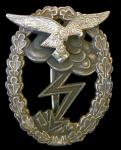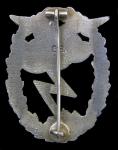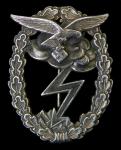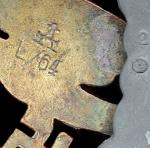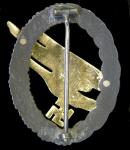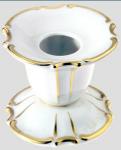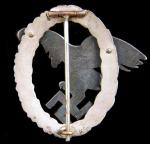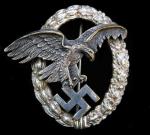-
Posts
3,397 -
Joined
-
Last visited
-
Days Won
3
Content Type
Profiles
Forums
Blogs
Gallery
Events
Store
Everything posted by J Temple-West
-
Although I consider these injection moulded badges (mould 1-2 ?A? &?A L/64?) to be from original ?Assmann? dies, I think the argument for there being both wartime and post-war examples has credence. Based on a little logical thought, opinions given by some old collectors over the years and the couple examples seen in vet acquired groups, I have formulated a ?rule of thumb? that I stick to. Of course this is only a personal preference as to construction and finishing and is in no way definitive. So, my preference?. Original wartime badges should have the eagle gilded on both obverse and reverse and rivets should be of the flat head type. This is based on the couple I?ve seen in the aforementioned groups, and logically I consider the fact that when Assmann produced the last in the series of die-struck badges, in zinc, they were using flat head rivets which continued into the injection moulded series and will be found on the both No.1 - No.2 types. So where do domed rivets come into the equation? It?s my feeling that an answer will be hard to come by. IMO, it?s another one that comes down to personal preference. An example of an Assmann badge in zinc...being the last in the die-struck series. Obverse.
-
There are pieces of white 'Allach' out there that have had embellishments added, post war. Painted allach had the paint applied before glazing. Later additions will be on top of the glazing. Have a look at your piece and see if the paint is over or under the glaze. When it comes to "vergoldet" I believe that this means fire gilded gold and would have been nothing other than gold in colour.
-
Very nice, Stijn. Any connection with 'Gliders' ?
-
I echo that. It would seem that Brehmer used not only the large round cathplate but also this type and a square'ish one. They also used 'C' and '?' style catches. I wonder if they ground their round catchplates down to these different shapes for some reason, possibly to accommodate the different catch style?....something we'll have to have a look at.
-
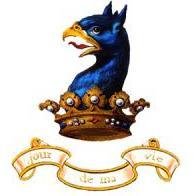
Heer flag id
J Temple-West replied to conker's topic in Germany: Third Reich: Wehrmacht Medals, Decorations & Awards
Hi conker If the one on the right has an eyelet at each corner it?s a field and vehicle identification flag (Feld und Fahrzeug Erkennungsflagge) Introduced in March 1940, the swastika flag replaced white painted Balkan crosses that were painted directly on all four sides of vehicles. In April 1941, swastika flags were replaced by flags bearing a black Balkan cross. The one on the left looks like the circular swastika piece that?s been removed from a large flag. -

Luftwaffe Luftwaffe General
J Temple-West replied to dante's topic in Germany: Third Reich: Research, Documentation & Photographs
Hi dante This must be Major General Wolfgang von Wild. http://www.geocities.com/~orion47/WEHRMACH...D_WOLFGANG.html -

Luftwaffe Spanish Cross
J Temple-West replied to Paul R's topic in Germany: Third Reich: Wehrmacht Medals, Decorations & Awards




